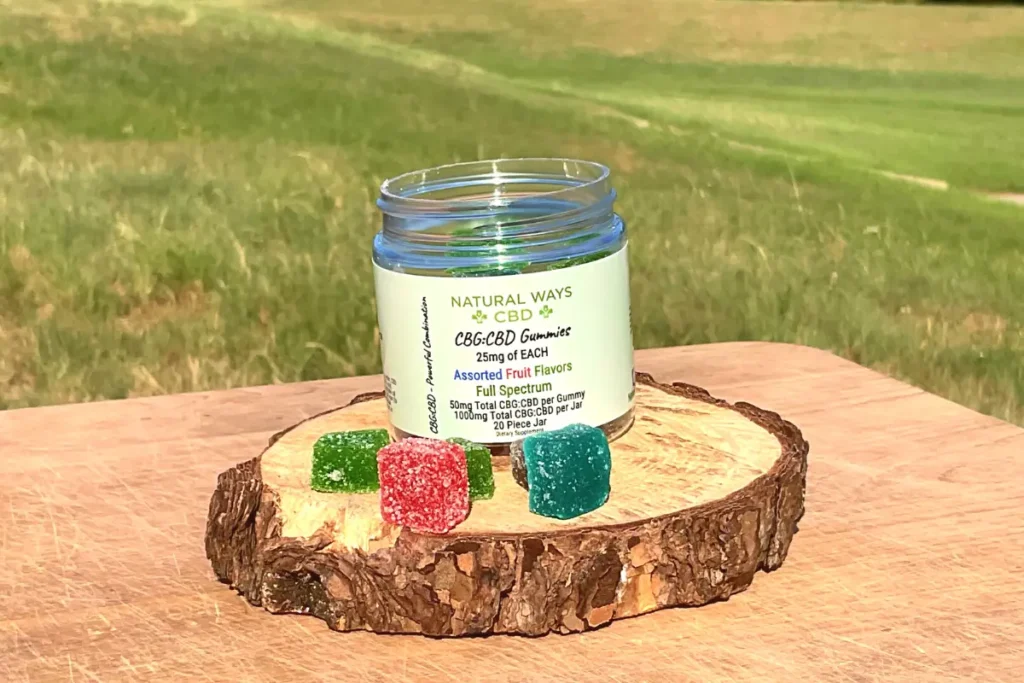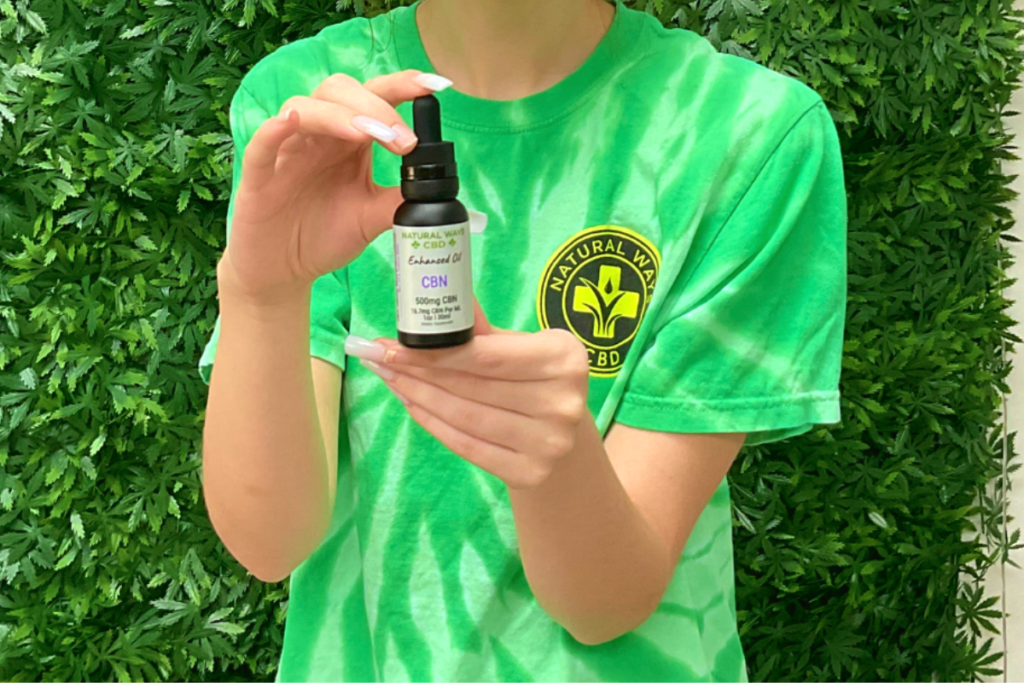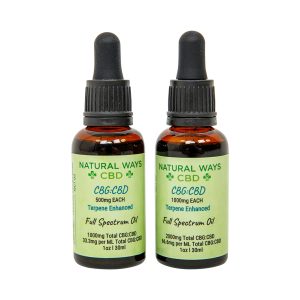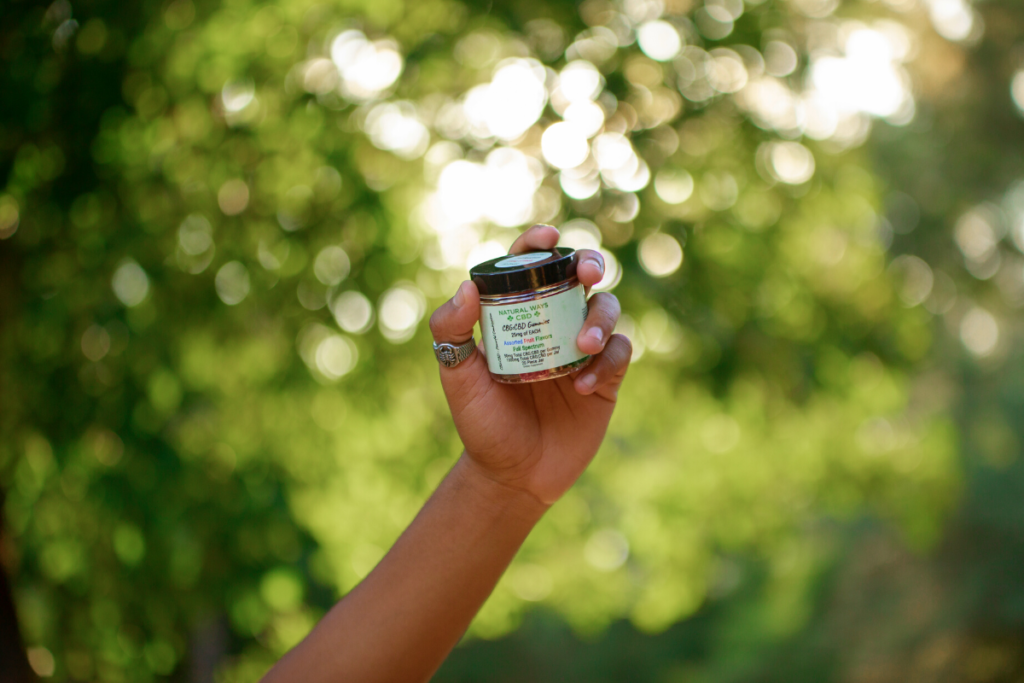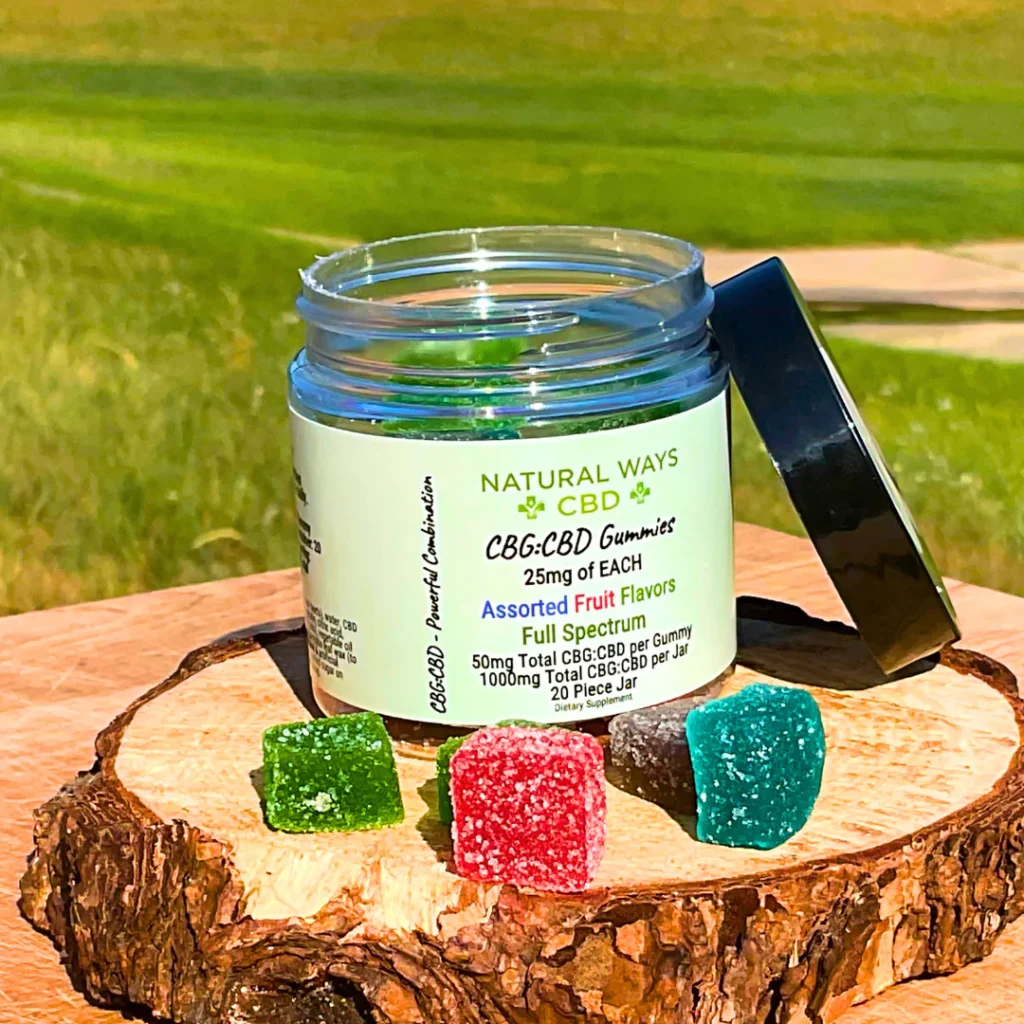CBG has a variety of potential therapeutic benefits, but perhaps the most common reason people use CBG is for pain and inflammation.
Research suggests CBG may have therapeutic potential for pain, and it may promote physical relaxation without causing any sort of inebriation. Anecdotally, CBG may also be more effective than CBD for pain.
From our perspective, CBG is the first thing we recommend when customers come in our doors and tell us they’re looking for something for pain.
But what do the studies say? And how does CBG work? In this article, we’ll be discussing everything you need to know about CBG for pain.
What is CBG?
Cannabigerol (CBG) is one of more than 100 cannabinoids that naturally occur in the hemp plant.
Unlike CBD and THC, CBG is a minor cannabinoid, meaning it’s only found in very small amounts in the cannabis plant.
Like CBD, CBG isn’t psychoactive and won’t get you high. However, it does have energizing and uplifting effects that many people compare to those of coffee.
CBG has been researched for pain, inflammation, anxiety, ADHD, and more.
Can CBG Help With Pain?
Research suggests CBG may have anti-inflammatory, analgesic (pain-reducing), and anti-nociceptive properties. By targeting the pain and inflammatory response and pain signaling itself, CBG may promote physical comfort. However, more research is needed to confirm this.
CBG offers a set of effects unique from either CBD or THC. Like CBD, CBG won’t get you high. But it also renders noticeably uplifting, energizing effects that CBD doesn’t.
Because of this, CBG may promote energy and focus in addition to addressing the underlying discomfort.
Because much of the research on CBG is preliminary and there haven’t yet been many clinical trials investigating CBG’s benefits for pain, it is best used as a supplement, not a treatment.
Still, CBG may render benefits for people dealing with physical discomfort.

CBG for Pain: What Research Says
CBG has been researched for many different types of pain:
CBG for stomach pain, IBDs, and IBS
Research suggests CBG may have therapeutic potential for stomach pain caused by inflammatory bowel diseases (IBDs), and many people also use CBG for inflammatory bowel syndrome (IBS).
IBDs are conditions in which tissues in your digestive tract become chronically inflamed. The main types of IBD are ulcerative colitis and Crohn’s disease.
Inflammatory bowel syndrome (IBS) is a group of symptoms that affect the gastrointestinal tract.
A 2013 research review found that CBG may help with the inflammation associated with IBDs [1].
CBG hasn’t been researched for IBS, but anecdotal evidence suggests CBG may promote physical comfort for people dealing with these symptoms.
CBG for nerve pain
Nerve pain results from damage to the nervous system, and can cause sharp discomfort throughout the body.
A 2022 study looking at peripheral neuropathy found that CBG may have therapeutic potential for managing the resulting discomfort [2].
Anecdotally, many people have found success with using CBG for nerve pain.
CBG for inflammation-based conditions
Studies suggest that CBG may have potential to be developed as an anti-inflammatory drug.
A 2021 research review found that CBG may have beneficial effects on arthritis, autoimmune disorders, and other inflammation-based conditions for which NSAIDs (non-steroidal anti-inflammatory drugs) and opioids are commonly prescribed [3].
CBG as an alternative to prescriptions
While CBG isn’t yet a proven pain treatment and shouldn’t be used as a replacement for prescriptions, survey research suggests that some people are finding it to be a viable alternative to more traditional methods.
In a 2021 survey of 127 people using CBG-predominant cannabis and cannabis products, 73.9% of respondents reported that CBG was superior to prescription medications for pain [4].
How CBG Works for Pain
CBG works by interacting with your body’s endocannabinoid system (ECS), a receptor system that regulates most vital functions, including your pain and inflammatory responses.
Ultimately, it is the job of the ECS to keep your body in a state of balance. The ECS usually works fine on its own, but introducing outside cannabinoids can support this bodily system during times of mental or physical stress.
The two main types of receptors found in the ECS are:
- CB1 receptors are primarily found in the central nervous system and are responsible for regulating how cannabinoids affect the brain. They also control the psychoactive effects of cannabinoids.
- CB2 receptors are found in tissues throughout the body, but not in the nervous system. They’re primarily responsible for regulating how cannabinoids affect the body.
Research has found that CBG binds to both types of receptors, which is why it’s able to promote physical comfort while also rendering a stronger mental effect than CBD [5].
Additionally, research suggests CBG is anti-nociceptive, meaning it can reduce pain signaling.
A 2023 study found that CBG can desensitize the TRPV1 receptors in your central nervous system, thereby blocking the transmission of pain signals [6].
Overall, the research on CBG is promising. While it’s not a proven treatment and not a guaranteed way to reduce pain, CBG has massive therapeutic potential for promoting physical relaxation and, and it continues to be researched.

CBG for Pain: Side Effects & Safety
Most of the studies that have looked at CBG suggest that it’s well-tolerated and creates very few adverse effects.
However, CBG may cause the following side effects:
- Dry mouth
- Drowsiness
- Dry eyes
- Increased appetite
We also recommend that you don’t take CBG shortly before it’s time to go to bed – while CBG’s energizing effects are often beneficial, they may interfere with sleep.
CBG vs. CBD for Pain
Research has shown that both CBG and CBD both may have benefits for those dealing with pain and inflammation.
But there isn’t any comparative research on CBG and CBD for pain, so we don’t know for sure which cannabinoid is more effective as an anti-inflammatory and analgesic.
Most of what we know about each cannabinoid is based solely on anecdotal evidence.
The main difference between CBG and CBD is in how they make you feel from a mental standpoint. While CBG tends to render energizing, uplifting effects, many people say that CBD makes you feel “nothing” which, if you’re dealing with pain, is a good thing.
Because CBG noticeably affects both the mind and body, though, some people find that it’s more effective for pain than CBD is – but this will vary from person to person.
However, we recommend taking CBG and CBD together, rather than separately, because they work better in combination.
This is an example of the entourage effect, which is a scientific theory that says cannabinoids and other compounds in the hemp plant work better when used together.
CBD may slightly dampen CBG’s energizing properties, while CBG enhances the mentally clarifying effects of CBD. Both cannabinoids also improve each other’s physically relaxing properties.
Together, CBG and CBD have more therapeutic benefits for pain than either cannabinoid on its own, and they render a more even-keeled effect.
How to Use CBG for Pain
There are a variety of different ways you can take CBG for pain. In this section, we’ll discuss the different types of CBG products and the pros and cons of each.
For reference:
- Average Bioavailability: The percentage of the CBG you consume that your body can use (in other words, how “efficient” a delivery method is).
- Onset Time: How quickly you’ll feel the effects of CBG in a certain delivery method.
CBG Oil
Average Bioavailability: 20-30%
Onset Time: 10-15 minutes
CBG oil is taken sublingually (under the tongue), then swallowed, rather than swallowed instantly. As a result, it works faster and is slightly more bioavailable than other consumption methods. CBG oil also allows for precise, down-to-the-drop dosing.
CBG Gummies
Average Bioavailability: 10-20%
Onset Time: 45 minutes to 1 hour
CBG gummies offer a fixed-dose consumption method, making them great if you plan to take the same amount of CBG on a regular basis. They can also be split into smaller pieces if you need a smaller dose.
Check out our guide to the best CBG gummies.
CBG Capsules
Average Bioavailability: 10-20%
Onset Time: 45 minutes to 1 hour
CBG capsules, like edibles, offer a fast, fixed-dose delivery method. The downside of capsules is that they aren’t a convenient product if you need a very small dose, since you can’t easily split them in half.
CBG Topicals
Average Bioavailability: N/A
Onset Time: 10-15 minutes
CBG topicals are products that are applied to the skin, rather than consumed orally. Topicals allow you to target the specific affected areas of your body, rather than spreading CBG throughout the body, because they won’t deliver the ingredients to your bloodstream.
CBG topicals are a good option if you need to apply CBG at night and don’t want the mental effects.
CBG Flower & Vapes
Average Bioavailability: 40-50%
Onset Time: 5-10 minutes
CBG hemp flower and CBG vapes are two other ways you can consume this cannabinoid. The benefit of inhalable consumption methods is that they begin rendering effects sooner than all other methods. However, there is the obvious health downside associated with inhaling anything.

CBG Dosage for Pain
For pain, we recommend starting with a medium-strength dosage of CBG. This will ensure the effects are powerful enough to appropriately address your situation.
You can calculate your dosage using this formula:
(0.3) x (your body weight in lbs.) = your daily CBG dosage in mg.
As you go, you can slightly increase or decrease the amount of CBG you’re taking by 1-2 mg per day until you land on the perfect amount.
Conclusion: A Minor Cannabinoid With Major Benefits
By interacting with your endocannabinoid system, CBG may render therapeutic potential for pain by promoting both mental and physical relaxation. However, more research is needed before we truly know how effective CBG is at addressing different sorts of pain.
As of now, CBG is best thought of as a supplement, rather than a treatment; there isn’t enough research to guarantee that it will predictably reduce pain. But the early research and anecdotal evidence is very promising.
We can see a future in which CBG and other cannabinoids are prescribed in place of the medicines currently being used — and it’s a good future, because CBG renders a fraction of the side effects of many prescription drugs.
CBG for Pain: Frequently Asked Questions
Here are some questions customers commonly ask us about using CBG for pain.
Which is better for pain, CBG or CBD?
Scientific and anecdotal evidence suggests both CBG and CBD are equally effective for pain. However, while CBG’s effects are noticeable, CBD’s effects are more subtle and described as “making the pain feel more distant.”
How does CBG make you feel?
CBG may promote physical relaxation while creating an energizing, uplifting, yet non-inebriating mental effect.
When should CBG be taken?
We recommend taking CBG in the morning or afternoon, as its energizing effects can help you start the day right. However, because of these energizing effects, CBG should not be taken at night unless you’re also taking significant amounts of CBD or CBN.
Is CBG good for fibromyalgia?
Research suggests CBG has analgesic (pain-reducing) and anti-inflammatory properties, however, more research is needed before we know CBG’s potential benefits for fibromyalgia.
Sources
[1] Borrelli, Francesca et al. “Beneficial effect of the non-psychotropic plant cannabinoid cannabigerol on experimental inflammatory bowel disease.” Biochemical pharmacology vol. 85,9 (2013): 1306-16. doi:10.1016/j.bcp.2013.01.017
[2] Sepulveda, Diana E et al. “Cannabigerol (CBG) attenuates mechanical hypersensitivity elicited by chemotherapy-induced peripheral neuropathy.” European journal of pain (London, England) vol. 26,9 (2022): 1950-1966. doi:10.1002/ejp.2016
[3] Kogan, Natalya M et al. “Novel CBG Derivatives Can Reduce Inflammation, Pain and Obesity.” Molecules (Basel, Switzerland) vol. 26,18 5601. 15 Sep. 2021, doi:10.3390/molecules26185601
[4] Russo, Ethan B et al. “Survey of Patients Employing Cannabigerol-Predominant Cannabis Preparations: Perceived Medical Effects, Adverse Events, and Withdrawal Symptoms.” Cannabis and cannabinoid research vol. 7,5 (2022): 706-716. doi:10.1089/can.2021.0058
[5] Navarro, Gemma et al. “Cannabigerol Action at Cannabinoid CB1 and CB2 Receptors and at CB1-CB2 Heteroreceptor Complexes.” Frontiers in pharmacology vol. 9 632. 21 Jun. 2018, doi:10.3389/fphar.2018.00632
[6] Wen, Yuting et al. “The antinociceptive activity and mechanism of action of cannabigerol.” Biomedicine & pharmacotherapy = Biomedecine & pharmacotherapie vol. 158 (2023): 114163. doi:10.1016/j.biopha.2022.114163

